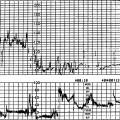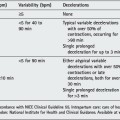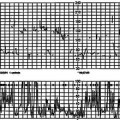Chapter 15 Medico-legal issues
In the late 1980s few hospitals had guidelines of practice for obstetrics and midwifery. Now they are almost universal. Only to a small degree has this been due to an increasing evidence base for practice. To a greater degree it has been because of a desire to promote a better quality of care and counter what has been a rising tide of litigation. Safe childbirth is seen in modern society as a right. This has become an expectation. When it goes wrong people ask why this should happen to them. If they do not get a satisfactory answer from the hospital they turn to the law. We should try to understand why families take legal action and the nature of this action. It most often relates to a damaged child. Although financial support is part of the objective, every family would rather have a healthy child. The legal process itself is long and tedious. The family would much rather devote the precious time to looking after the injured child. The families often feel that they have not been given an explanation of what happened and communication has been poor. They also feel that what has happened to them should not happen to other people. We are sometimes asked if we practise defensive medicine. The answer is that good medicine is defensive medicine. If we practise according to guidelines with good communication and giving parents choices then this is the defence against litigation.
1. To ensure claims are dealt with consistently and with due regard to the proper interests of the NHS and its patients.
2. To manage the financial consequences of such claims.
3. To advise the Department of Health on both specific and general issues arising out of claims against the NHS.
4. To manage and raise the standards of risk management throughout the NHS.
In its current annual report the NHSLA state that despite widespread concerns about a ‘compensation culture’ in the UK, claims remain very steady with a 1.6% increase in clinical claims in 2005/2006.172 These are overall claims. Obstetric claims remain the second largest group (after surgery) and the highest value. There is limited information about trends in obstetric claims. Of the clinical claims made against the NHS in the 10 years of the existence of the NHSLA, 43% of claims were settled out of court, 38% were abandoned by the claimant, 15% have yet to settle and 4% were settled in court. Fewer than 50 negligence cases a year are settled in court. Of the 87 clinical negligence cases actually litigated in court in the last two financial years, 26% were settled in court in favour of the claimant, 68% were settled in favour of the NHS and 6% settled mid trial.
The NHSLA take a very active role in risk management. The Clinical Negligence Scheme for Trusts (CNST) run by the NHSLA sets standards, most recently stated in the ‘Maternity Clinical Risk Management Standards’.173
Stay updated, free articles. Join our Telegram channel

Full access? Get Clinical Tree








